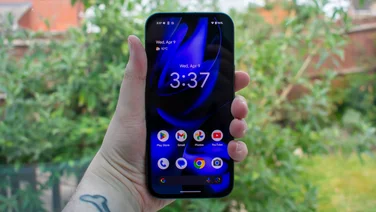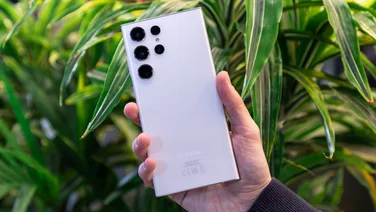To help us provide you with free impartial advice, we may earn a commission if you buy through links on our site. Learn more

Qualcomm flew me out to its annual Snapdragon Summit to see all the latest announcements from its range of mobile and computing hardware. As Expert Reviews’ phones editor, my focus was mostly on the former.
I have a hit-and-miss history with Snapdragon’s smartphone platforms. I wasn’t thrilled about last year’s Snapdragon 8 Elite upending the established naming system and making the lineup more confusing, but there’s no denying that Qualcomm’s most advanced chipsets have consistently been the belle of the Android phone ball.
Snapdragon 8 Elite-powered flagships like the Honor Magic 7 Pro, OnePlus 13, Motorola Razr 60 Ultra and the entire Samsung Galaxy S25 series all deliver blistering CPU speeds, alongside some of the smoothest framerates and most extensive battery life we’ve ever recorded. In other words, the Snapdragon 8 Elite is a tough act to follow.
But based on what I’ve seen of the 8 Elite Gen 5 at the Snapdragon Summit, it has a good shot at vaulting over that particularly high bar. Let’s have a look.
Snapdragon 8 Elite Gen 5: What’s new?
The first thing to discuss is the name. If I thought that the change to Snapdragon 8 Elite was obfuscating, this progression to Gen 5 is beyond the pale. What’s happening here is that the original 8 Elite followed the previous flagship chipset, the Snapdragon 8 Gen 3, and was therefore generation 4 in all but name. Now, Qualcomm has split the difference and kept the Elite label but brought back the generational numbering.
It’s much more positive news from here on out, at least. Let’s talk architecture.
The Snapdragon 8 Elite Gen 5 is manufactured on a 3nm fabrication process, the same as its predecessor, and features the latest third-generation Oryon CPU. This is an octa-core chip, like its predecessor, but the peak clock speeds have been upped for all cores: the two prime cores now run up to 4.6GHz and the six performance cores go up to 3.62GHz.

This is highlighted as the fastest mobile CPU in the world, and those potential clock speeds certainly back that up. Qualcomm claims that the Gen 3 Oryon is 20% faster than the previous generation in single-core operations and 17% faster with multi-core functions. Moreover, it’s apparently 35% more power efficient.
I’ll have to get my hands on phones running the Snapdragon 8 Elite Gen 5 to confirm the claims around power efficiency, but my benchmarking session at the Snapdragon Summit gave me some results that allow me to compare the single and multi-core prowess to the previous generation.
Here’s how it compares to the Snapdragon 8 Elite for Galaxy, Snapdragon 8 Elite, Snapdragon 8 Gen 3 and Apple A18 Pro (we don’t have testing data for the iPhone 17 at the time of writing).
Bear in mind that the Samsung phone is using an overclocked version of the 8 Elite, so for a straight generational comparison, we’re looking more at the Honor Magic 7 Pro. Compared to these results, the Snapdragon 8 Elite Gen 5 shows a 25% improvement in the single-core benchmarks and 31% in the multi-core, both of which are actually beyond Qualcomm’s estimates.
The Adreno GPU is also said to be more power efficient this time around (20% better than last year) and brings a handful of improvements to gaming performance, which is said to be 23% better than the previous generation. Meanwhile, the new Adreno High Performance Memory (HPM) adds a layer with 18MB of dedicated memory, which can apparently improve visual rendering by up to 38%.
The Hexagon NPU rounds out the central trio, with plenty of advancements of its own. General performance is claimed to have been improved by up to 37%, and LLMs can now output at up to 220 tera operations per second (TOPS), both of which should help to deliver more efficient and personalised on-device AI processing.

The final thing I want to highlight here is that the Snapdragon 8 Elite Gen 5 will be the first mobile platform to debut Qualcomm’s new Advanced Professional Video (APV) codec, a new format that promises “professional-level” video that offers greater control over post-production. Relevant to most people? No, but still an interesting progression that could see Android phones challenge the iPhone’s video production supremacy.
Which phones will use the Snapdragon 8 Elite Gen 5?
We have seen quite a spread of brands making use of the Snapdragon 8 Elite in 2025, so there are a few likely early adopters of the next generation. First up, we have…
- The Xiaomi 17 series: Already confirmed to be using the Snapdragon 8 Elite Gen 5, Xiaomi’s trio of flagships – the 17, 17 Pro and 17 Pro Max – are all due to be released in China imminently. The UK release won’t be until early 2026, however, which could mean that the first model to hit our shores will actually be…
- The Honor Magic 8 Pro: Its predecessor ended up being the first Snapdragon 8 Elite phone to come to the UK, so this feels like a pretty safe bet. I’m expecting this to launch in either January or February 2026, around the same time as…
- The OnePlus 15: OnePlus’ flagship series is consistently among our favourite phones for sheer value, so I highly doubt the 15 will ditch the tradition of offering the most powerful Android chipset for a lower price than rivals. This could beat Honor to the punch, likely to launch in early January 2026, and will certainly be ahead of…
- The Samsung Galaxy S26 series: All four entries in the S25 series used the Snapdragon 8 Elite, but that hasn’t always been the case with previous generations. Regardless, the Ultra always gets the best chipset, so the Samsung Galaxy S26 Ultra will undoubtedly use an overclocked “for Galaxy” version of the Snapdragon 8 Elite Gen 5. It also feels likely that Samsung will return to the Snapdragon well for…
- The Samsung Galaxy Z Fold 8: This year’s flagship foldable also used the Snapdragon 8 Elite, so I wouldn’t be surprised to see the Z Fold 8 powered by the 8 Elite Gen 5. I’m less sure about the clamshell Samsung Galaxy Z Flip 8, as the Flip 7 didn’t use the Snapdragon 8 Elite. If next year’s model continues this trend, it could be at a disadvantage next to…
- The Motorola Razr 70 Ultra: My favourite clamshell phone of the year delivered exceptional performance, thanks to the Snapdragon 8 Elite, finally surpassing Samsung in the benchmarks. If Motorola knows what’s good for it, it will hang on to this advantage by fitting its following model with the Snapdragon 8 Elite Gen 5.
I expect to have my hands on a smartphone powered by the new Snapdragon 8 Elite Gen 5 sometime in the first few weeks of 2026. Whether that ends up being the Honor Magic 8 Pro or the OnePlus 15 remains to be seen, but either way, I think it’s a safe assumption that we will see impressive leaps in performance and power efficiency. And then Samsung will swoop in with the Galaxy version in the Galaxy S26 Ultra and push the envelope even further.
Start saving your pennies now and stick with us through to 2026 to see which Snapdragon 8 Elite Gen 5-powered smartphone you should splash out on.




